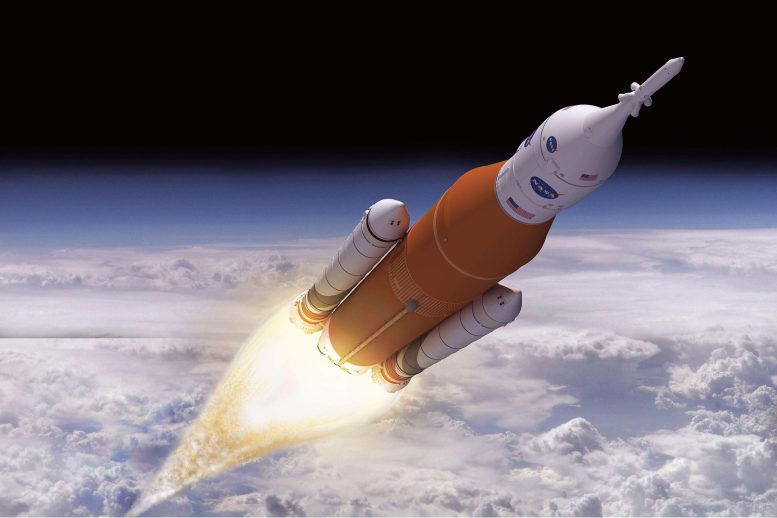
In the Artemis II mission, four astronauts will embark on a lunar journey to assess NASA’s core human deep space exploration capabilities, including the Space Launch System rocket and Orion spacecraft, for the first time with a crew on board. Credit: NASA
Technicians at NASA’s Michoud Assembly Facility in New Orleans have installed the first of four RS-25 engines on the core stage of the agency’s SLS (Space Launch System) rocket that will help power NASA’s first crewed Artemis mission to the Moon. During Artemis II, NASA astronauts Reid Wiseman, Victor Glover, Christina Koch, and CSA (Canadian Space Agency) astronaut Jeremy Hansen will launch on SLS and journey around the Moon inside the Orion spacecraft during an approximately 10-day mission in preparation for future lunar missions.
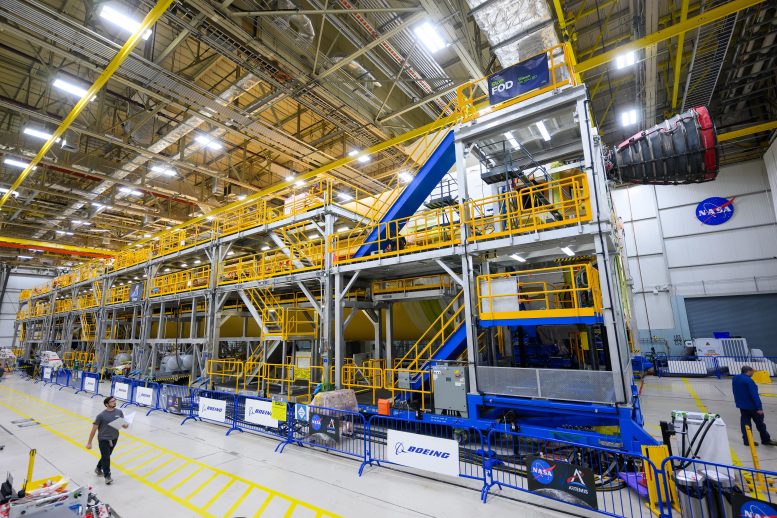
Engineers and technicians from Aerojet Rocketdyne and Boeing at NASA’s Michoud Assembly Facility in New Orleans have installed the first of four RS-25 engines to the core stage for NASA’s Space Launch System rocket that will help power the first crewed Artemis mission to the Moon. The yellow core stage is seen in a horizontal position in the final assembly area at Michoud. One RS-25 engine, engine number E2059, has been installed in the top left corner at the base of the 212-foot-tall core stage. Credit: NASA
The Sept. 11 engine installation follows the joining of all five major structures that make up the SLS core stage earlier this spring. NASA, lead RS-25 engines contractor Aerojet Rocketdyne, an L3 Harris Technologies company, and Boeing, the core stage lead contractor, will continue integrating the remaining three engines into the stage and installing the propulsion and electrical systems within the structure.
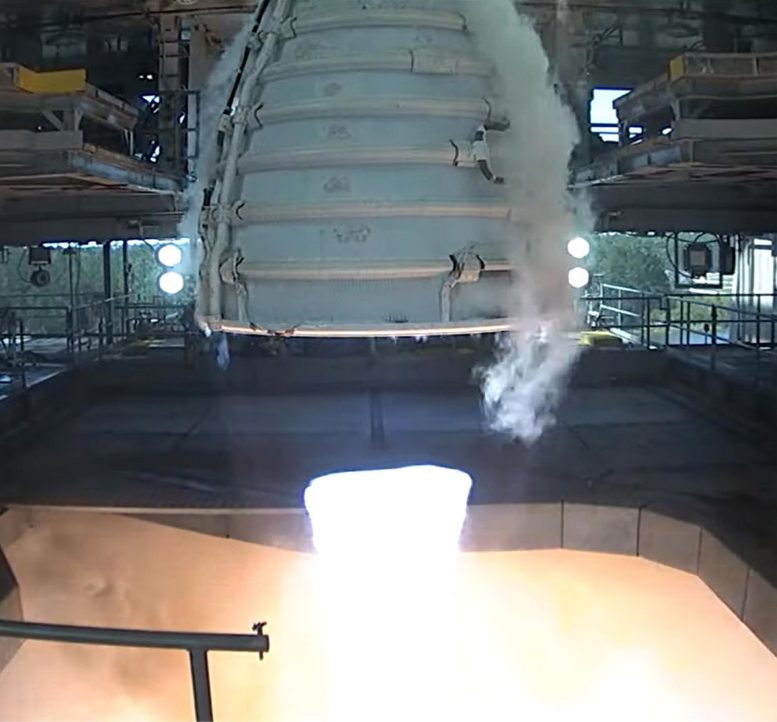
NASA successfully conducted a 10-minute hot fire of an RS-25 certification engine on March 21, 2023, surpassing the required power levels and duration for SLS missions, ensuring the engine’s safety and performance capabilities. Credit: NASA/Stennis
All four RS-25 engines are located at the base of the core stage within the engine section, which protects the engines from the extreme temperatures during launch and has an aerodynamic boat tail fairing to channel airflow. During launch and flight, the four engines will fire nonstop for over eight minutes, consuming propellant from the core stage’s two massive propellant tanks at a rate of 1,500 gallons (5,678 liters) per second.
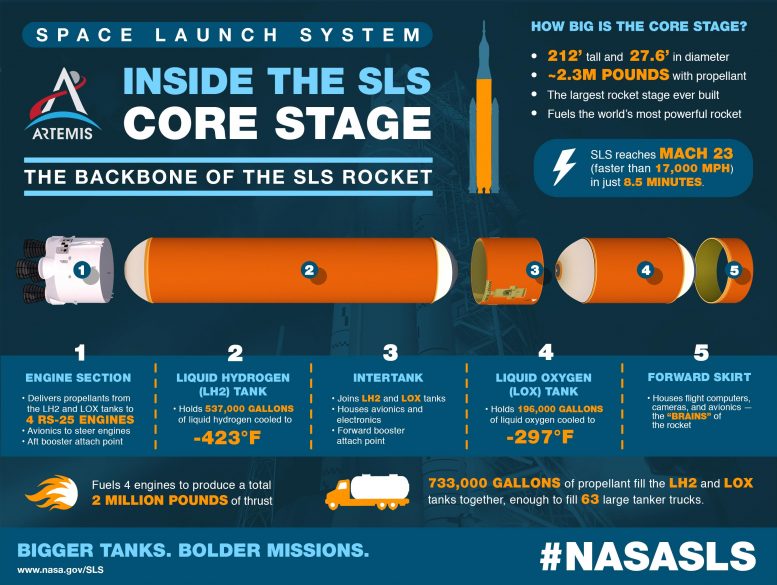
We need the biggest rocket stage ever built for the bold missions in deep space that NASA’s Space Launch System rocket will give us the capability to achieve. This infographic sums up everything you need to know about the SLS core stage, the 212-foot-tall stage that serves as the backbone of the most powerful rocket in the world. The core stage includes the liquid hydrogen tank and liquid oxygen tank that hold 733,000 gallons of propellant to power the stage’s four RS-25 engines needed for liftoff and the journey to Mars. Credit: NASA/MSFC
Each SLS engine has a different serial number. The serial number for the engine installed on September 11 in position two on the core stage is E2059. It along with the engine in position one, E2047, previously flew on space shuttle flights. E2047 is the most veteran engine of the entire set flying on Artemis II with 15 shuttle flights, including STS-98, which delivered the Destiny Laboratory Module to the International Space Station in 2001. The engines installed in positions three and four (E2062 and E2063) are new engines that include previously flown hardware.
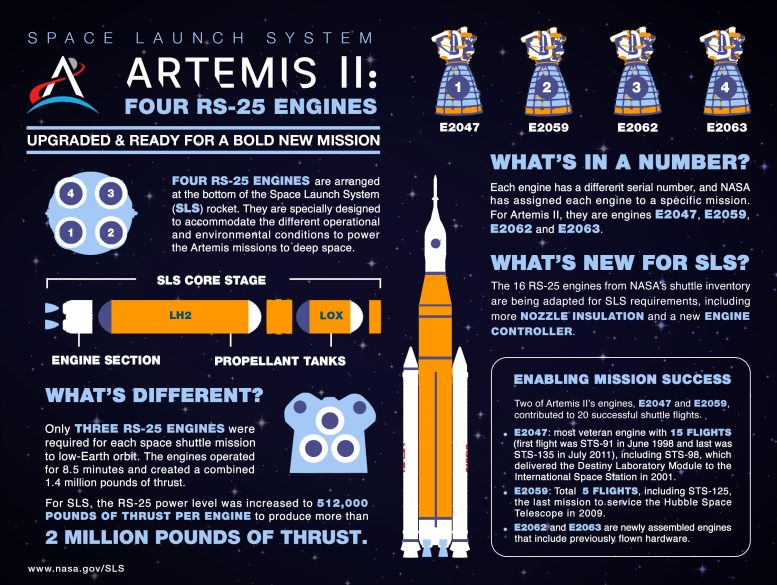
Four RS-25 engines produce more than 2 million pounds of thrust during ascent to help send Artemis II astronauts beyond Earth’s orbit on their journey around the Moon. Artemis II is the second flight of NASA’s Space Launch System (SLS), the world’s most powerful rocket, and the first crewed Artemis mission. To help power NASA’s next-generation lunar missions, the RS-25 engines have been upgraded for SLS. Credit: NASA/Kevin O’Brien
NASA is working to land the first woman and first person of color on the Moon under Artemis. SLS is part of NASA’s backbone for deep space exploration, along with Orion and the Gateway in orbit around the Moon, and commercial human landing systems. SLS is the only rocket that can send Orion, astronauts, and supplies to the Moon in a single mission.




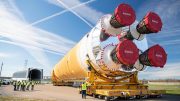
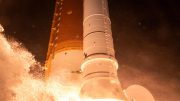
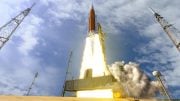
Be the first to comment on "NASA’s Artemis II Moon Rocket: First RS-25 Engine Installed on SLS Core Stage"